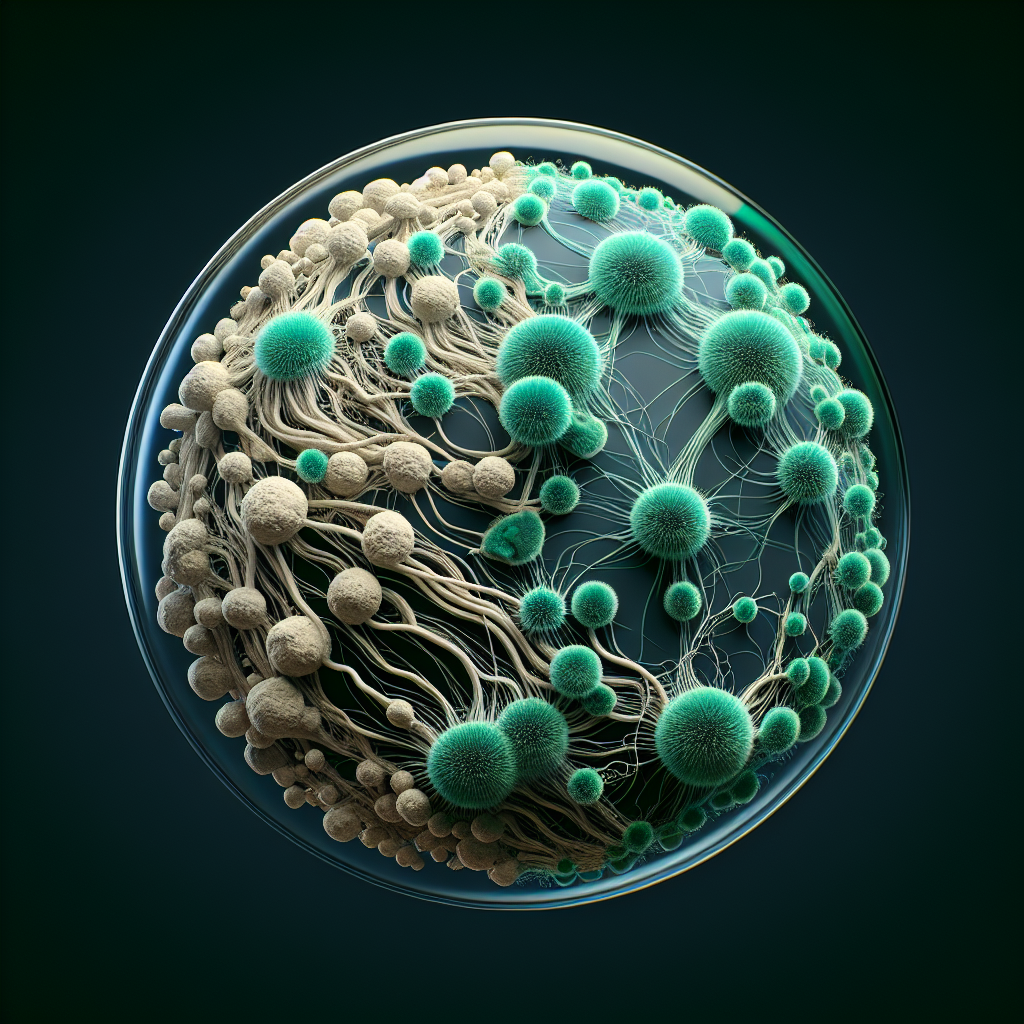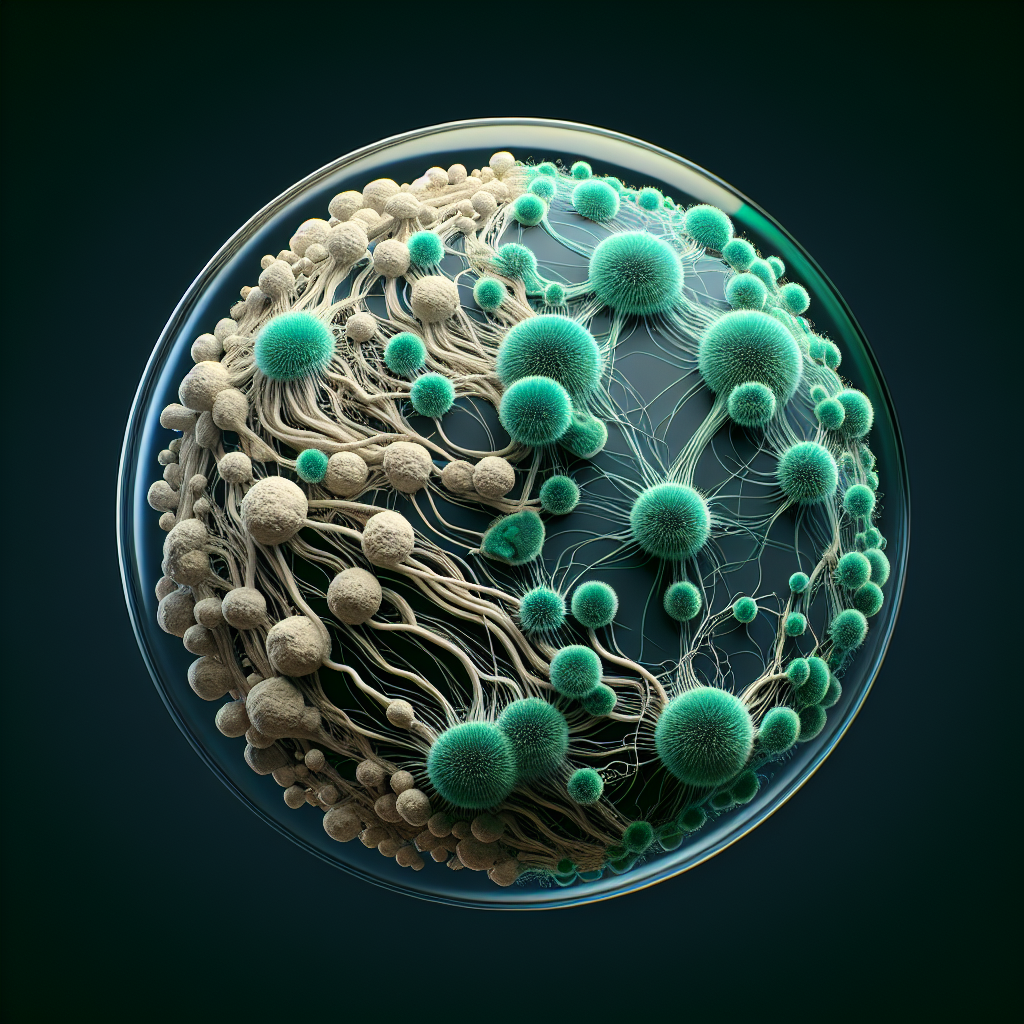In the realm of fungi biology, frequent interactions occur that can have significant repercussions in various areas such as agriculture, food production, and environmental science. As you embark on a journey to clarify the complexities of these interactions, specifically focusing on Trichoderma mold and mycelium, you will gain a deeper comprehension of their microscopic dialogues. The article titled “Understanding the Interaction between Trichoderma Mold and Mycelium” offers critical insights into the behavior of these organisms and explores the impact of their relationship on larger ecosystems. Extend your knowledge about these microscopic elements and discover their interactions tinged with competition, survival tactics, and ultimately, the balance of life.

Overview of Trichoderma Mold
Description of Trichoderma Mold
Trichoderma mold is a type of filamentous, fast-growing fungus that is ubiquitous in nature. These molds are commonly found in soil, however, they can also exist in other habitats such as wood. One defining characteristic of Trichoderma is its rapid growth and high sporulation rate, resulting in green spores that give the colony its signature hue. These molds are also noted for their distinct, sweet, and ‘coconut-like’ odor.
Species and Varieties of Trichoderma
There are approximately 89 species of Trichoderma, characterized into groups based on physical attributes and genetic differences. Some of the frequently encountered types include Trichoderma harzianum, Trichoderma viride, Trichoderma koningii, and Trichoderma longibrachiatum. Each species varies in their niche preference, feeding habits and capacity to reproduce.
Habitats and Conditions for Growth
Trichoderma thrives in a variety of habitats, particularly in soil and root environments. They can also be found in decomposing organic material in nature such as dead leaves or wood. The Trichoderma mold prefers warm temperatures, with an optimal growth range of 25-30°C. These molds can survive in a wide range of pH values, but they seem to prefer slightly acidic to neutral conditions.
Biological Properties of Trichoderma Mold
Physiological Characteristics
Trichoderma molds are filamentous fungi which means they have a branched growth habit often characterize by the formation of a network of hyphae. These microbes are aerobic, necessitating access to free oxygen for survival and growth. Furthermore, they produce various enzymes capable of degrading plant residues, facilitating their role as potent decomposers in the ecosystem.
Reproductive Mechanisms
Reproduction in Trichoderma includes both sexual and asexual phases. The latter is more common and involves the production of conidia, which are non-motile spores that germinate to give rise to new colonies. In contrast, the sexual phase, which is less frequent, involves the fusion of two genetic types to produce a fruiting body containing ascospores.
Genetic Characteristics
Genetically, different species of Trichoderma have distinct chromosomal numbers and sizes, which contributes to their phenotypic differences. Additionally, these fungi are known to possess an extraordinary ability to mutate and adapt, which enables their survival even under hostile environmental conditions.
Overview of Mycelium
Description of Mycelium
Mycelium refers to the vegetative part of a fungus, composed of a network of fine, white filaments called hyphae. This mycelial network serves as the foundation for fungal growth and plays a vital role in nutrient absorption and distribution. It spreads underground, often invisibly, and can span vast areas.
Role in Fungal Life-cycle
In the fungal life cycle, the mycelium plays a crucial role as the primary site for nutrient absorption and assimilation. Mycelium also functions as the reproductive structure of fungi, as it generates spores which are crucial for dispersal and colonization in new environments.
Environmental Impact of Mycelium
In the environment, mycelium makes significant contributions to nutrient cycling by decomposing organic matter and releasing essential minerals back into the soil. It also enhances soil structure through its intertwined hyphae acting like a net, increasing the soil’s resistance to erosion. Moreover, mycelium serves as a primary food source for numerous soil organisms, contributing to biodiversity.
Biological Properties of Mycelium
Structural Features and Morphology of Mycelium
The mycelium structure is built from hyphae, which are tubular, threadlike structures with cell walls made of chitin. The network structure of the mycelium, often compared to a web, allows for a high surface area relative to volume, making it highly efficient at nutrient and water absorption.
Mechanisms of Nutrient Absorption
Mycelium absorbs nutrients from the surrounding environment through its hyphae. The network of hyphae release enzymes that break down complex organic material, such as cellulose and lignin, into simpler compounds that the fungus can absorb and utilize. This mechanism makes mycelium an important player in recycling nutrients in the environment.

Interactions between Trichoderma Mold and Mycelium
Mechanisms Underpinning Interactions
Trichoderma and mycelium can interact through various mechanisms like competition, antagonism, or mutualism. For instance, Trichoderma is known for its mycoparasitic behavior, in which it produces enzymes that degrade the cell walls of other fungi, thus inhibiting their growth or even killing them.
Impact of Interaction on Growth Patterns
These interactions can influence the growth patterns of both Trichoderma and other fungi. Specifically, Trichoderma may overwhelm and dominate the space, affecting the biodiversity of the local fungal community. Conversely, the mycelia of certain fungi might exhibit defensive mechanisms enabling their survival in the presence of the aggressive Trichoderma molds.
Effects on Environmental Conditions and Ecosystems
The interactions between Trichoderma and mycelia can also greatly influence the surrounding environment. For example, Trichoderma’s enzymatic degradation of other fungi contributes to nutrient cycling and organic matter decomposition, directly affecting soil characteristics and indirectly influencing plant growth.
Biological Mechanisms of Co-existence
Competition for Resources
The co-existence of Trichoderma and other fungal species in an ecosystem is often marked by competition for resources, such as space and nutrients. In this competitive interaction, Trichoderma often has the upper hand due to its aggressive nature and fast growth rate.
Mutualistic Relationships in Some Cases
In some instances, a mutualistic relationship can be established between Trichoderma and other fungi or plants. For example, Trichoderma can colonize plant roots and offer protection against pathogenic fungi, while the plant provides nutrients to the mold.
Adaptation to Ensure Survival
Adaptation is another key mechanism in ensuring survival amidst competition. Over time, fungal species in the presence of Trichoderma can develop resistance mechanisms or find other niches to minimize competition.
Impact of Interactions on Human Health
Potential Allergenic Reactions
Trichoderma can impact human health by inducing allergic reactions in sensitive individuals through the inhalation of spores. Common symptoms include allergic rhinitis, conjunctivitis, and asthma.
Pathogenic Implications of Trichoderma
While being largely non-pathogenic to healthy individuals, certain Trichoderma species, such as T. longibrachiatum, can cause infections in immunocompromised patients. These range from superficial skin and nail infections to more serious systemic or disseminated diseases.
Beneficial Medical Uses of Mycelium
On the positive side, mycelium has found extensive use in the medical field. Certain species produce bioactive compounds with potential antibacterial, antiviral, and anticancer properties. Moreover, the potential for using mycelium in tissue engineering and wound healing are currently being explored.
Impact on Agriculture: Fungi as Biocontrol Agents
Use of Trichoderma in Plant Health
Trichoderma species are widely used in agriculture as biocontrol agents against plant pathogens. They can protect plants from a wide range of diseases caused by bacteria, fungi, and nematodes. Moreover, Trichoderma can promote plant growth by enhancing root development and improving nutrient uptake.
Potential for Mycelium in Biofertilization
Mycelium also plays an important role in agriculture, particularly in the process of biofertilization. Mycorrhizal fungi, which establish a symbiotic relationship with plant roots, can help in nutrient uptake, particularly phosphorus, improving the overall plant health and yield.
Management Strategies to Enhance Biocontrol
Strategic application of Trichoderma and mycelium-based products can greatly enhance their impact as biocontrol agents. This includes adequate timing, optimal formulation, and keeping in consideration the environmental conditions and the specific needs of the crops.
Current Research and Future Perspectives
Promising Discoveries in the Field
Research on Trichoderma and mycelium has uncovered a wealth of promising discoveries with applications in agriculture, medicine, and environmental management. These include the use of these fungi to clean up contaminated soils, to act as natural alternatives to chemical fertilizers and pesticides, and to produce valuable bioactive compounds.
Areas Requiring Further Studies
Despite significant progress in understanding Trichoderma and mycelium, there are still areas requiring further exploration. For instance, more research is needed to better understand the complex interactions between these fungi and their environment, and to discover other useful properties and applications.
Prospects of Biotechnology Applications
The prospects for biotechnology applications of Trichoderma and mycelium are vast, ranging from the creation of bio-based products such as biofuels and biofertilizers, to their potential use in biomaterial production, disease prevention, and detoxification processes.
Conclusion: Understanding the Balance
Summarizing the Interactions of Trichoderma and Mycelium
In conclusion, the interactions between Trichoderma and other mycelia play an integral role in shaping fungal communities, influencing ecological processes, and affecting human health. The aggressive yet versatile nature of Trichoderma and the critical ecological roles of mycelium require us to carefully study these entities to harness their potential benefits and mitigate possible risks.
Its Implications in Different Fields
Understanding the interactions between Trichoderma and mycelium has implications across diverse fields. In agriculture, it can aid in developing effective biocontrol strategies to enhance crop production. In medicine, it might bring potential therapeutic applications. From an environmental perspective, it informs sustainable management of ecosystems.
Future Endeavors in Further Exploration
As we continue delving into the intricate dynamics of Trichoderma and mycelium, there’s certain to be new insights that will not only deepen our understanding of fungal biology but also provide innovative solutions to pressing problems in health, agriculture, and environment. The future of this field holds a great promise.
